The girl behind the bar was wearing a black skinny-fit t-shirt emblazoned with the unambiguous and slightly disconcerting slogan, ‘I Love Violence’, as my Celtic travelling troupe entered The Jolly Roger bar in the belly of Hamburg’s anarchistic pirate quarter, Sankt Pauli.
Despite the barmaid’s attraction to a good old-fashioned brawl, my travel companions and I had arrived in peace. We would have much preferred to learn of vintage and hard-to-find Adi Dasslers, The Beatles’ visit to the nearby Dom funfair and, of course, the squatters’ iconic Totenkopf during our weekend visit to the home of Hamburg’s Braun Weiss.
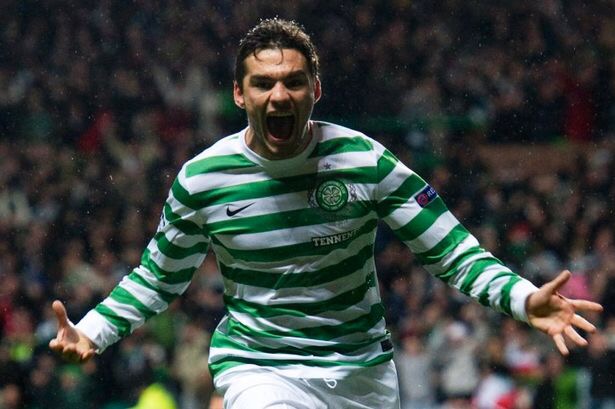
Somewhere between the Star Wars and Korova Milk Bars, The Jolly Roger’s tables and walls are adorned with posters, stickers, pennants, scarves and curio from all over the football world. It is the greatest anti-fascist, anti-establishment graffiti gallery you could ever imagine and we were mightily heartened to discover flashes of Glasgow’s Green and White amongst the KiezKicker collage. There’s a gun-toting Walter Sobcheck, warning us that “These Colours Don’t Run”, courtesy of the Sankt Pauli Skinheads; fan protest art to prevent a police station from being situated in the back straight of the Millerntor; various proclamations of “Gegen Nazis”; and the red-and-black skull and crossbone ‘Jolly Rouge’ as a statement to “Bring Back St Pauli”.
We were well and truly steeped in St Pauli sozial romanticism as the Astra beers and Fritz-Kolas were ordered and we settled down in the corner of this intriguing bierhaus. Energie Cottbus were hosting this fan-cultural phenomenon on the big screens, and the barmaid with a penchant for ultra-violence informed us that no other football match would be shown as long as St Pauli were in action. Despite the house rules, the barmaid brought over a laptop from behind the bar so that we could simultaneously enjoy Celtic’s visit to the Highlands on league duty against Inverness Caley.
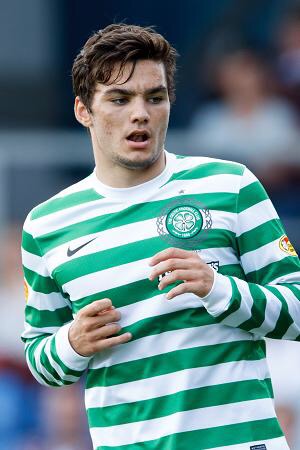
Two hours later and, partly drunk on comradeship, new friendships and the St Pauli mythos, I was convinced that Celtic had unearthed their finest home-grown striker since Charlie Nicholas. We had just witnessed Neil Lennon’s shadow side record an impressive 4-2 victory at a historically hazardous Highland haunt and 18-year-old Tony Watt had scored a double in his first start.
As a group of Teddy Boys at the bar began to grab each other’s throats after a minor disagreement, we decided to move on to The Shebeen. A rendition of 1980s disco anthem, ‘Give It Up’, by KC & The Sunshine Band was transformed in homage to the Coatbridge youngster, and it unashamedly became the soundtrack of our weekend.
Tony Watt’s formative football years had been unremarkable and largely unconventional. He spent five years with Dunbeth Boys Club, where he played from the age of eight, and around three seasons with amateurs, Whifflet Athletic. It was while with the latter that his prolific goalscoring prompted trials with Saint Mirren and Queen’s Park.
Both clubs rejected the striker, with the Buddies’ head of youth brandishing him “too lazy”. Unperturbed, a 15-year-old Watt responded to an advert in his local paper, which invited youngsters along to Airdrie United for a trial.
Airdrie’s youth team coach, Jimmy Boyle, identified a raw talent in Tony, whose strength, instinctive finishing, and immense self-belief elevated him way beyond any of the other 30 applicants on show. Watt scored twice during the bounce match and was immediately called up to Airdrie’s under-17 side. Three months later, the free-scoring Watt was promoted to the under-19 squad and, when Boyle replaced Kenny Black as Airdrie’s first team manager, he made young Tony his second signing during the pre-season of 2010-11.
Schoolteachers at Saint Andrews High in Coatbridge had laughed when Tony Watt rhapsodised about his aspirations to follow in the footsteps of idols Didier Drogba and Henrik Larsson but, by the age of 16, he was making his first-team debut for Airdrie United against Cove Rangers in a pre-season friendly. He scored twice.
His competitive debut came soon after and Watt’s bonafide scoring account was opened just 10 minutes after coming on as a sub against East Fife in Airdrie’s opening league match of the season at Bayview. Before Tony scored his second league goal at Glebe Park he was already being tracked by English giants Liverpool.
This rough diamond was invited to Melwood by Anfield youth bosses for a trial in September 2010 and Jimmy Boyle pushed the arrangement through for the good of his prodigious talent. Watt was combining his two days training at Airdrie with an apprenticeship in a North Lanarkshire council office and had to seek permission from bosses to attend the three-day trial. Faced with the dilemma of chasing his dreams over a pen-pushing career, Tony made the journey south and was involved in a youth match against Wolves before returning to his parent club.

With at least three top flight English sides circling New Broomfield‘s pen, Celtic and Rangers declared an interest in Tony Watt. He was invited to Lennoxtown, where he showed up well in an under-17s game against one of his other suitors, Liverpool. A training stint at Murray Park followed before Tony scored his final goal in an Airdrie shirt against Alloa at Recreation Park.
Just six months after his Airdrie United debut, 17-year-old Watt signed a three-year deal with Celtic worth a potential £100,000 and went straight into Chris McCart‘s development side. Airdrie were able to strengthen their own squad with some of the funds by bringing in another young Scottish prospect in Gary Mackay-Steven.
Just two months after signing, Watt and fellow £100,000 signing, Greig Spence, were handed all-lime first team jerseys in a Friendly match against Athletic Bilbao at their old San Mames Stadium. True to form, Tony Watt almost scored with his first touch of the ball in the scoreless draw.
Although bubbling under the radar, there was no doubt that Watt’s rise had been nothing short of spectacular. He followed this up in September with a wonder goal for Celtic under-19s against Barcelona in the NextGen Series game. The audacious Watt picked the ball up just inside Barca’s half, before dribbling past three defenders and finishing with all the aplomb of a seasoned professional.
Tony Watt described signing for Celtic as “a dream come true” but even his wildest fantasies could not have prepared him for what was to come next. Hundreds of youngsters go through the revolving door of every top football club in Britain, and very few are able to craft out a meaningful career at the very highest level. By the time the 18-year-old had made the step up to make his competitive debut against Motherwell in April 2012, Watt had added a physicality to his game that full-time training had bestowed him.
Only in the squad due to being suspended for the following night’s Youth Cup Final due to a semi-final sending off, Watt came off the bench after an hour to replace the ineffective Pawel Brozek. With Stuart McCall’s men holding Celtic to a scoreless draw, Watt pounced on a Victor Wanyama cross at the back post and guided a right-footed shot into Darren Randolph’s net from a tight angle. The youngster with the number 32 jersey had opened the scoring for the team he had always supported and sent the Celtic fans behind the Fir Park goal into bedlam. Watt saluted them with a grin from ear to ear and portrayed a genuine innocence so vividly lacking in the box office world of top class football. Three minutes later, Watt rifled in a second from the edge of the box and his introduction to the Celtic faithful was complete.
Fortune, Rasmussen, Murphy, Kapo, Bangura, Brozek, Miku, Lassad: A litany of substandard strikers to have desecrated the hallowed Celtic striker’s jersey from 2009 to 2012. Millions wasted and only Gary Hooper to speak of during that era in terms of true quality in front of goal. So when Tony Watt emerged from Lennoxtown and scored his second double in his first start against Inverness Caley, he offered a glimmer of hope to Celtic fans who had long since grown tired of being let down by overpaid, unknown mercenaries.
Used sparingly, Watt added another couple of league goals to his tally against Saint Mirren (5-0) and Dundee United (2-2) before experiencing the apex of his young life. 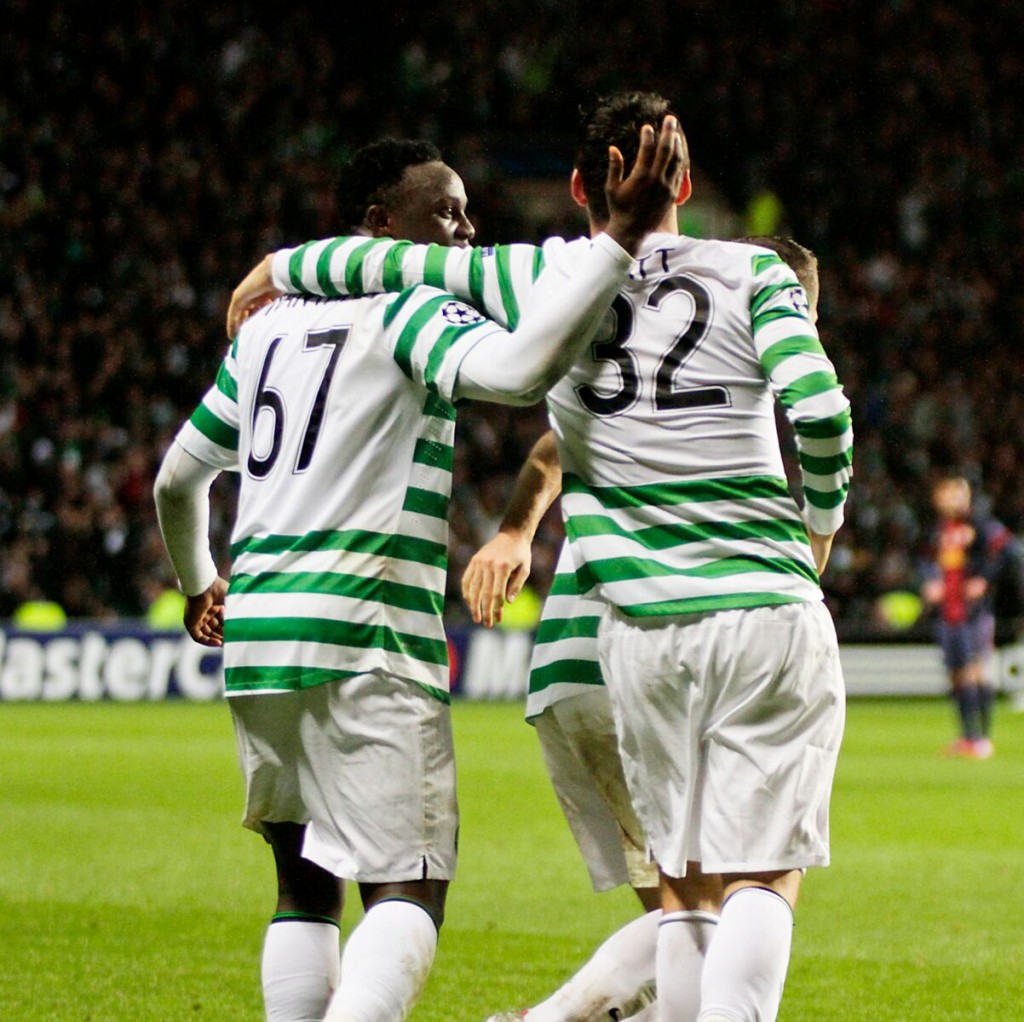
“This is the stuff of legend. At the age of just 18, Tony Watt takes his place in Celtic folklore. This is mind-blowing. This is Celtic two Barcelona nil. He has no fear…”
Those words will live forever in the minds of Celtic fans around the world and it is without doubt the finest result in my Celtic-supporting life. Another fairytale chapter was written in the glorious history of this unique football club on 7th November 2012, when the unfancied champions of Scotland defeated the greatest club side in the world to celebrate the Glasgow underdog’s 125th birthday.
As the fan choreo turned Celtic Park into a green-and-white fortress to the backdrop of ‘Zadok The Priest‘, no one gave the home side a modicum of hope against a plethora of world-renowned modern-day icons, assembled for hundreds of millions, who hadn‘t lost an away match in the Champions League for six years.
Tony Watt made his entrance on 72 minutes for Mikael Lustig with Celtic a goal up virtue of a rampaging Victor Wanyama header. Just eleven minutes later and a penetrative Fraser Forster clearance was completely misjudged by Xavi ten yards inside his own half. Watt’s movement and pace was electric as he timed his run to perfection, took one touch and bulleted his shot beyond the oncoming Victor Valdes.
The Spanish press christened goalkeeper Forster ‘La Gran Muralla’ after this encounter and the match-winning Watt demanded more worldwide column inches than Ballon d’Or, World Player, European Golden Boot-winning forward, Lionel Messi, who pulled back a late consolation for Barcelona.
Although not a product of Celtic’s youth system per se, Watt offered legions of fans a glimpse of days gone by, when Barrowfield’s conveyor belt of talent produced a seemingly never-ending supply of goalscoring superstars in the sixties, seventies and into the eighties, but the aforementioned Nicholas was the last of his ilk to truly shine. The nineties proved far less fertile and offered us Gerry Creaney and Mark Burchill. Although much-derided, fellow Coatbridge graduate, Creaney was a prolific marksman in a woeful Celtic side. Burchill had been dubbed “Scotland’s Michael Owen” and had a lethal turn of pace, but both players were eventually sold to Portsmouth for under a million each and faced football obscurity for most of their careers. So would Tony Watt’s footballing journey continue to be meteoric or would it go the same way as so many other Scottish talents and be catastrophic?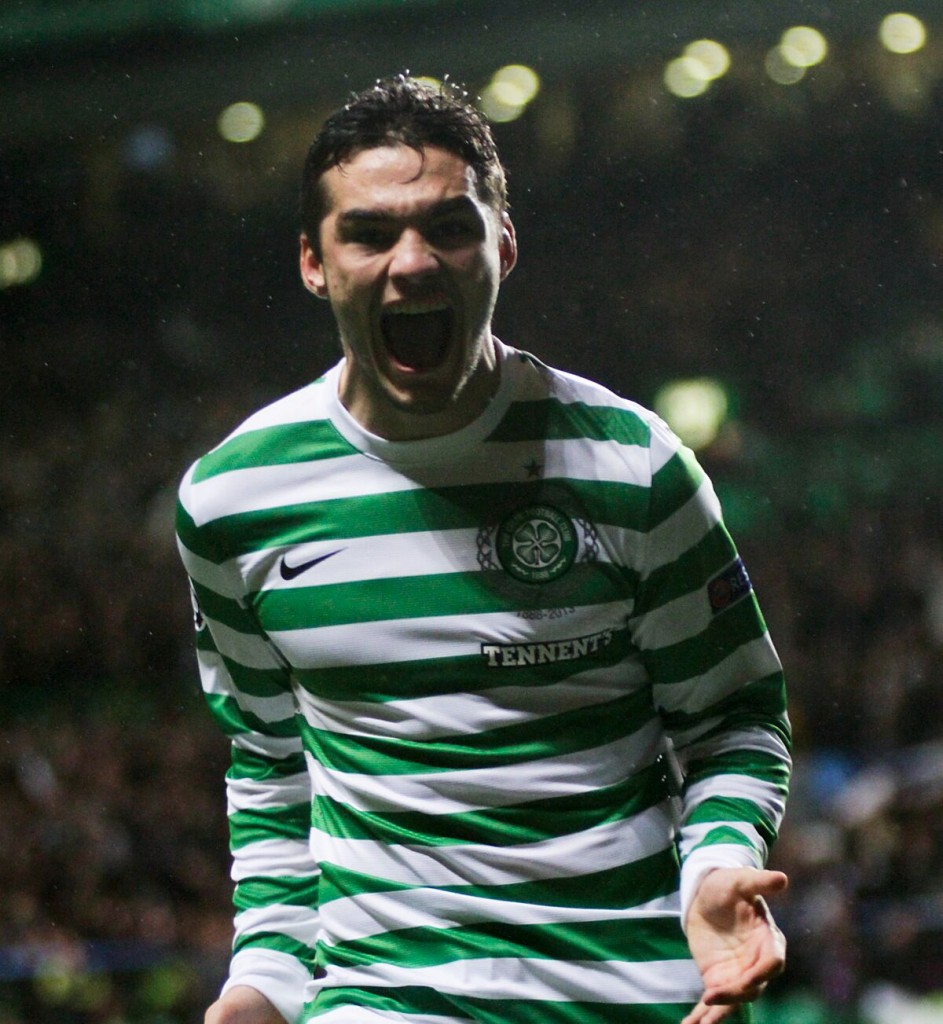
Following up the Barcelona performance with another goal against Saint Johnstone four days later, Watt promptly signed an improved four-year deal with Celtic amidst interest from West Brom, but the rest of his season was mediocre at best as he failed to score another goal and was in and out of the side that went on to secure a League and Scottish Cup double.
Concerns began to surface that Watt did not possess the maturity or mentality to make a lasting contribution at Celtic Park and, during the pre-season of 2013-14, Neil Lennon brought in another striker in 22-year-old Amido Balde from the Portuguese league. Despite interest from Saint Mirren and Aberdeen, Watt was sent to Belgian Pro League side, Lierse, on a season-long loan deal on the same day that Celtic shelled out even more millions on yet another striker, as Teemu Pukki joined from Schalke.
It became clear that Tony Watt had failed to deal with his overnight promotion from Bhoy Racer to King of Coatbridge and the loan deal was viewed by many as a concerted attempt by Neil Lennon to help develop the player in an environment devoid of the destructive baggage which has seriously hindered the football careers of many fine Scottish prospects: from Andy Ritchie to Derek Riordan and dozens inbetween. Lennon was no stranger to setbacks himself as a youngster and the foot soldier that saved the Empire may well have seen this loan opportunity as Watt’s last throw of the dice. In just nine months Tony Watt had gone from being the slayer of Barcelona to fifth-choice striker at Celtic Park and, while his team-mates looked forward to Champions League encounters with AC Milan, Barcelona and Ajax, Watt was rooted in the backwater of the Belgian league.
In the Jupiler Last Chance Saloon, Watt took just 90 seconds and two touches of the ball to score his first goal for Lierse against Kortrijk. He was immediately criticized by his new manager, former Ajax and Netherlands goalkeeper Stanley Menzo, for being lazy and unfit, and a pattern began to emerge.
Scoring goals did not seem to be a problem for Watt, but his discipline certainly appeared to be. Watt believed that tearing his shirt off, after finding the net a few days later against Lommel United, was an ample way of proving his condition to Menzo (a Dutch veteran of the 1990 World Cup Finals).
By October 2013, Scotland under-21 boss, Billy Stark, had axed the Anglo-Scot from the European Championship double-header against Slovakia and Georgia claiming, “Tony has to work on his fitness”. Dundee United’s Andy Robertson and Celtic’s Callum McGregor, then on loan to Notts County, were called up as debutants as Tony Watt’s career began to stall in dramatic fashion. One year earlier, Stark had described the striker as “unstoppable”.
November spawned a monster in Belgium, as a month later Watt was sent home from training on two occasions and sent off after 30 seconds against Charleroi. Menzo threatened to end the loan deal early and Neil Lennon proffered that “Tony can be a difficult boy sometimes”.
A redemption of sorts occurred on Boxing Day as Watt came off the bench to score two against Mechelen, to which Menzo explained, “today I am glad we have him but tomorrow I might want to murder him”. 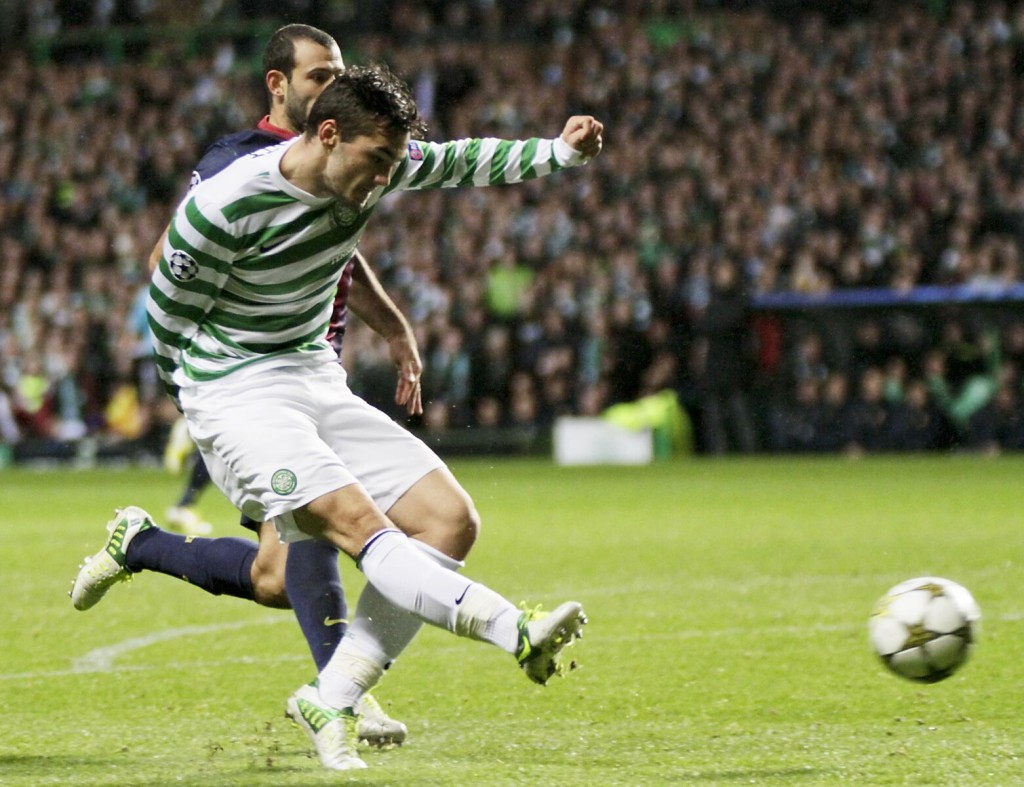
By February, Lierse wanted to make the move permanent but a month later and Menzo was reported to have slapped Watt in the face and demoted him to the reserves after the young striker publicly criticised his gaffer. Tony Watt never played another first-team match for the Belgian side and returned home for pre-season having notched 9 goals in just 10 starts.
Despite maintaining a decent return of goals, Tony Watt’s career had been in freefall since that unforgettable European night against Barcelona. Neil Lennon had commented after that vintage result that “it will take some doing to top what he’s done tonight” but the teenager had a once-in-a-lifetime opportunity to work on the obvious talent he had and it would appear that he failed to do so.
His Twitter parody account, which regularly spoke of “Burds” and “Playstations” astonishingly turned out to be genuine and his summer holiday with friends was played out to a disbelieving public when he should have been priming his body for a return to Celtic’s first team.
To the surprise of many, Neil Lennon departed Celtic Football Club in May 2014 and was replaced by Ronny Deila, a young Norwegian with a fantastic reputation for developing players in his homeland. Deila and his assistant John Collins instantly mapped out a vision of their Celtic side and placed a huge onus on conditioning, performance analysis and sports science.
Celtic’s first competitive match under the new managerial team came in the shape of KR Reykjavik in the Champions League Second Qualifying Round. As Callum McGregor scored the only goal of the game in Iceland, Tony Watt was lining up for the reserves against Stenhousemuir.
Regardless of his well-documented problems in Belgium, Watt had still done enough to impress Zulte-Waregem, KV Oostende and Standard Liege and all three clubs were said to be preparing a bid for the 20-year-old.
New manager, Deila, revealed that he had tried to sign Tony whilst in charge of Stromsgodset and it appeared that there may yet be a glimmer of hope for him at Celtic Park. Tony, meanwhile, uploaded images of his new leg tattoo on to Twitter.
Celtic travelled to St Pauli in July 2014 as I had done two years previously and it was in the quarter infamous for the sinful mile that Tony Watt had truly come to my attention. It would also be here, in the Millerntor, that his Celtic career would come crashing to an end.
Ronny Deila picked Watt to start for the first time and played him wide left. As AC/DC‘s ‘Hells Bells‘ rang around the incredible home of St Pauli it occurred to me that a more fitting soundtrack could have been The Specials‘ ‘Too Much Too Young‘. Tony Watt walked onto the pitch sporting a hairstyle aggressively shaved around the back and sides and I wondered if he was perhaps made for a cult club like St Pauli. 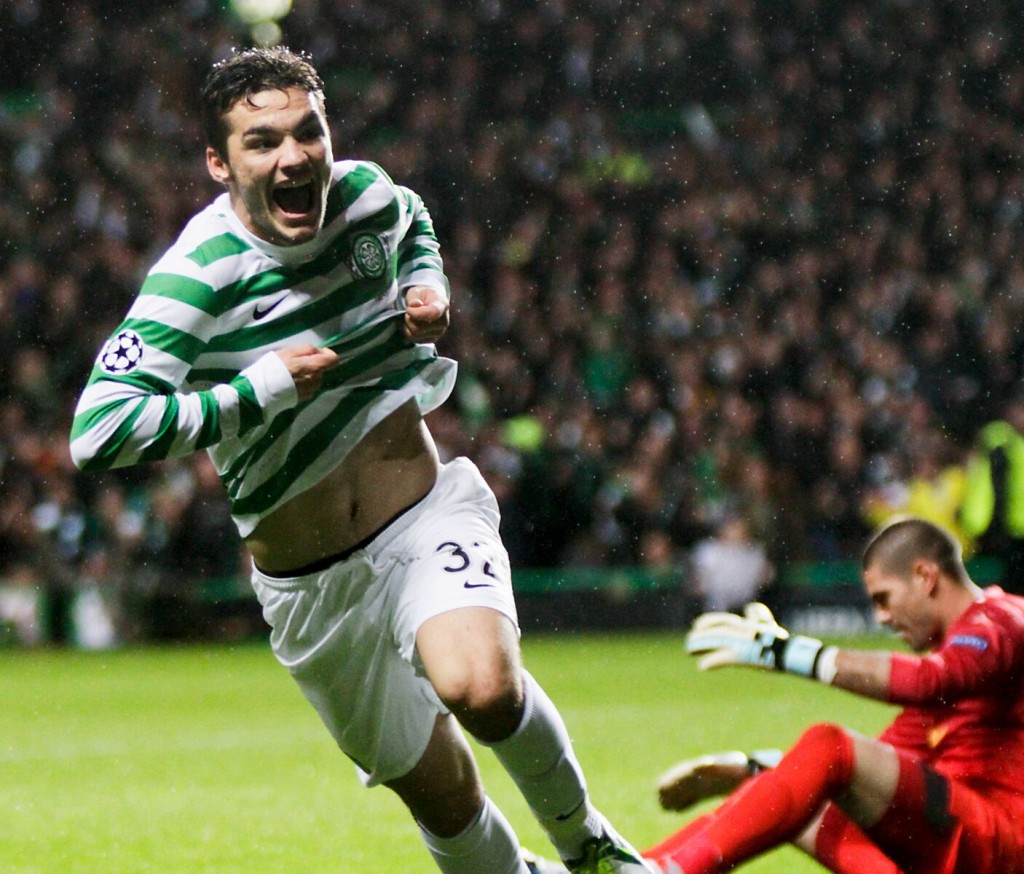
Watt played well enough and almost scored but when Celtic won a late penalty, and an opportunity to equalize a first half opener from Christopher Nothe, there was a scene more fitting of a public park on a Sunday morning. Watt instinctively snatched the ball to take the penalty despite Bahrudin Atajic being an apparently pre-determined choice for the spot kick and he was berated from the touchline by an incensed Ronny Deila. Watt was forced to hand the ball over to the Bosnian, who proceeded to loft it high over the bar.
A procession of managers have criticized Tony Watt for his fitness and attitude but he was an exciting young prospect with a composure in front of goal that belied his tender years. There was a sense of sadness and disappointment, if not surprise, when Celtic accepted an offer of around £1.2 million from Standard Liege and Watt signed a lucrative five-year deal with the Belgian side. Like the many expensive foreign imports before them meanwhile, Balde and Pukki monumentally flopped at Celtic Park and the club struggled to recoup the vast amount of their outlay on the pair.
At just 22, Watt recently signed a year-long loan deal with eighth club Hearts and there may still be an opportunity for him to develop into the player he promised to be just four short years ago.
Sadly, it seems more likely that future generations of Celtic fans will watch reruns of Celtic’s historical victory against the best club side in the world only to ask, “Whatever happened to Tony Watt?”
Written by Paul Dykes, who has just published his new book Hoops Stars and Stripes, The Andy Lynch Story on CQNBookstore.com


